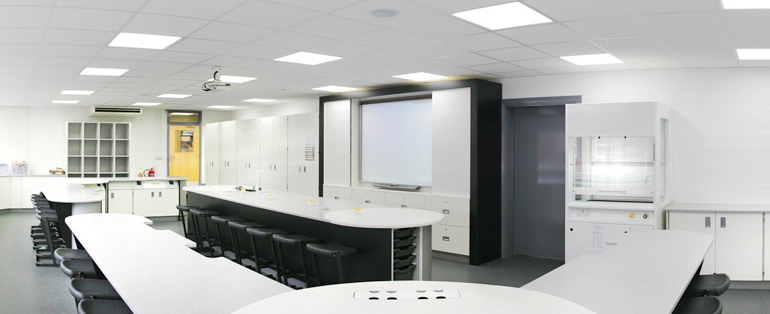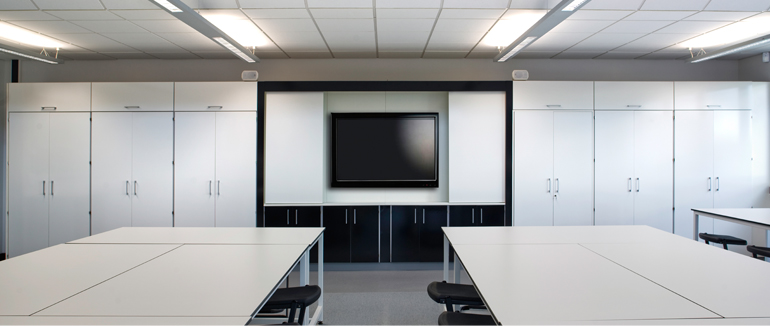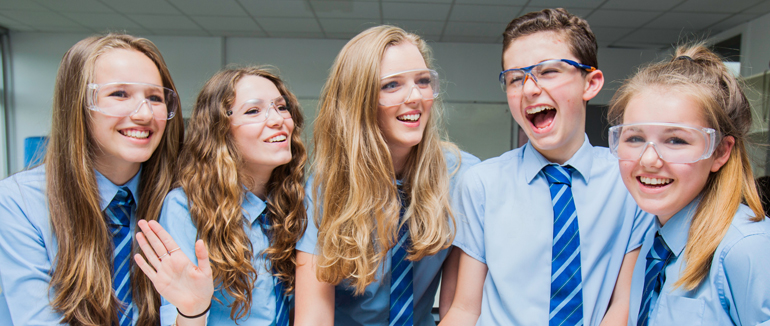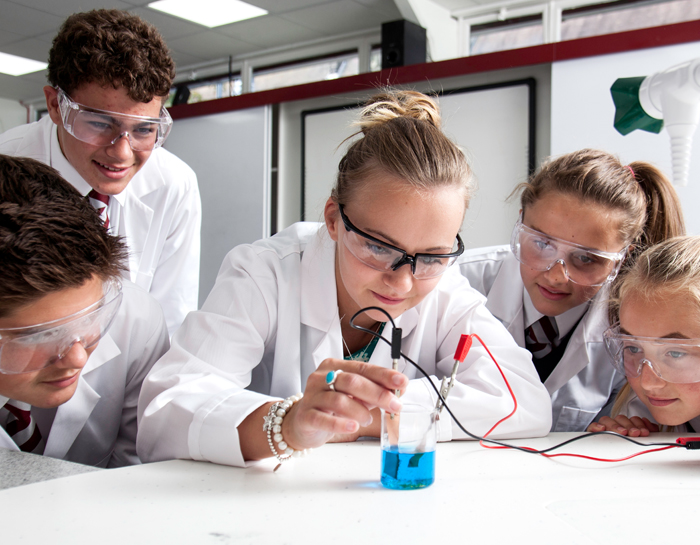What makes a Creative Classroom?
Multi-Sensory Learning
Most pupils will benefit from a variety of learning methods in the classroom. From practical tasks, to discussion and debate, to demonstrations, student’s education gains enormously from a multi-sensory approach to learning.
The Learning Pyramid demonstrates the different levels of information retention achieved by different forms of learning. The pyramid splits the forms of learning into two groups: Passive Learning and Participatory Learning. It demonstrates that education works best when it pulls together learning forms which appeal to multiple senses.
While important across most subjects, this multi-sensory learning is particularly useful in classrooms which teach creative subjects, as students can approach thematic topics from various angles.

Versatile Furnishings and Amenities
Busy pupil timetables make it important to use time effectively; versatile and functional classroom furnishings are a necessary component of this.
Our Hot Corners laboratory concept is a multifunctional work space, which supports solo, group and practical work. This enables students to engage with different forms of learning, interact with course leaders and fellow students, and of course access learning resources easily. This layout works well in science labs – take a look at our thoughts on creating state-of-the-art science classrooms.
Another popular addition to educational interiors is the Teacher Wall, designed to integrate teaching resources such as white boards, interactive TVs, books, filing, pin boards, and Gratnells trays. It’s a multi-purpose storage system which frees up valuable classroom space.

Environmental Factors
Students’ progress can improve by up to 25% with the right environmental factors. A study from the University of Salford reported that the progress of 73% of students is significantly affected by the environmental factors of their school classrooms.
Factors such as furniture, layout, room colour, temperature, acoustics and lighting all affect students’ information absorption and retention – making them important to consider during the designing and building of new classrooms and the redevelopment of existing sites.
Modern classroom design can help make information retention and encouragement of participation more effortless, allowing course leaders to teach a curriculum more efficiently.

Improved Interaction
A classroom with clear channels and short lines of communication makes interaction between teachers and students more effective and efficient; working to improve interactions in the classroom is an important way to improve creative learning.


